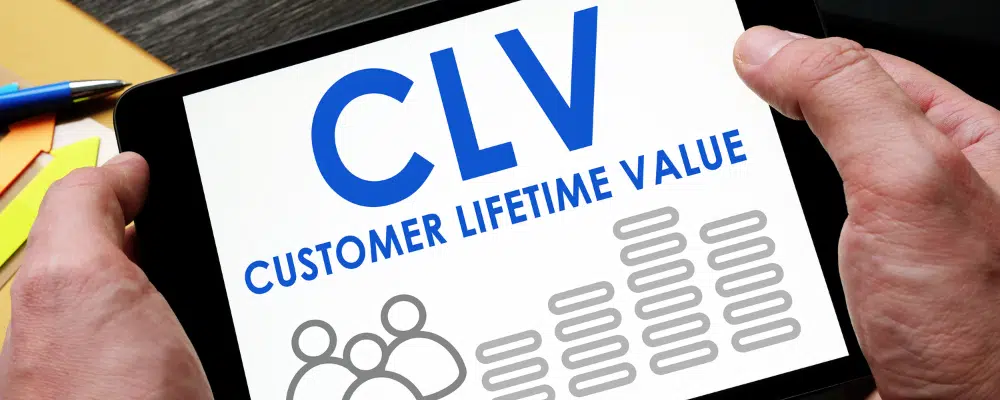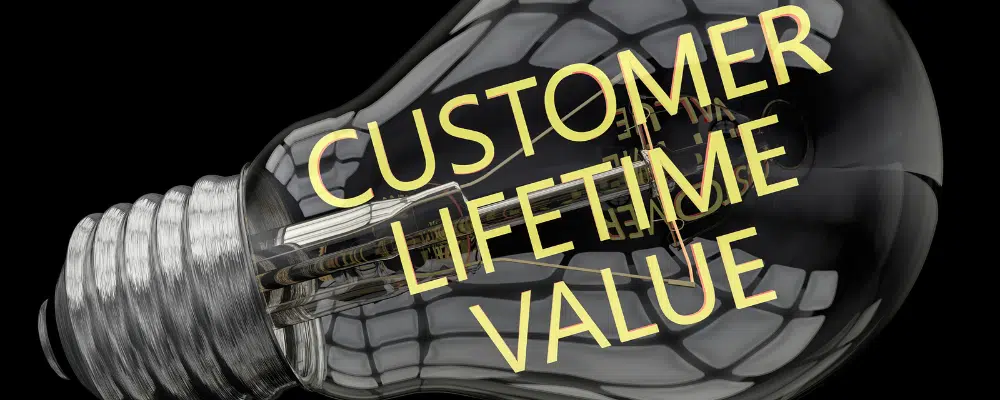There is a hidden gem that can change the way you view and expand your business in the busy world of small businesses, where every sale counts and every customer relationship is a treasure. Imagine a local plumbing service provider who remembers his customers’ unique plumbing needs and always arrives with a smile, or an appliance repair technician who not only fixes appliances but also offers tips to keep them running smoothly. What if I told you that these seemingly straightforward businesses wield a secret weapon that propels them beyond mere survival? It’s called Customer Lifetime Value, or CLV for short.
What is Customer Lifetime Value (CLV)?
Customer Lifetime Value, or CLV, serves as a valuable metric that informs businesses about the potential earnings from a customer throughout their entire engagement with the service, such as electrician services. Think of it as having a repeat customer who regularly requires your electrical expertise. Calculating CLV is akin to estimating how much they will spend on your services over the duration of their loyalty. This calculation empowers businesses to plan strategically for their future.
To calculate CLV, businesses employ a straightforward mathematical formula. They tally up the total expenditures a customer makes on their electrical services and then divide that figure by the duration of the customer’s loyalty. This process is similar to assessing the annual spending of your faithful customer on electrical work and estimating the length of their continued patronage. Understanding CLV provides businesses with a comprehensive view of their customer relationships, aiding in making informed decisions to steer their growth in the right direction.

CLV acts as a guiding compass for businesses, leading them towards success. It enables them to make informed choices regarding customer satisfaction and allocation of resources. It’s akin to ensuring your electrician services are always ready for your loyal customers because you anticipate their continued reliance. CLV is the driving force behind business growth, ensuring customer contentment and sustainable profit growth.
The Advantages of Knowing CLV
Customer Lifetime Value (CLV) acts like a trusted advisor for small businesses. It provides valuable insights that help them make smarter choices. With CLV, businesses can decide where to allocate their time and resources. For instance, if they know that certain customers bring in more money over time, they can prioritize keeping those customers happy. This informed decision-making ensures that every effort contributes to the business’s growth.
Instead of thinking about just one transaction, CLV encourages businesses to focus on building strong, lasting connections with their customers. These long-term relationships are like a foundation for steady growth. When businesses nurture these bonds, customers tend to return again and again. This not only keeps customers satisfied but also boosts the business’s profits in the long run. It’s a strategy that benefits both sides – the business and the customers.
How to Calculate Customer Lifetime Value
Calculating Customer Lifetime Value (CLV) is an important process for service-based businesses like Locksmith, HVAC, and Water Damage Restoration. It involves several key steps to gain insights into your customers’ long-term value. Firstly, you must determine the specific time frame you want to predict, whether it’s a year, multiple years, or a more extended period. Next, data collection becomes paramount, focusing on customer service requests and their spending habits within your chosen timeframe.
To calculate CLV, pinpoint the average value of each service request and the frequency at which customers seek your services during the designated period. This means determining how much, on average, a customer spends on a single service call and how often they require your services. Also, consider estimating the typical duration of a customer’s loyalty to your business, which is the customer’s lifespan.

While manual calculations are an option, the digital age offers accessible tools and software that streamline the process. These tools prompt you to input your business-specific data, generating CLV estimates efficiently. It’s vital to remember that CLV isn’t a one-time effort but an ongoing analysis. Therefore, maintaining a meticulously organized database that records service requests, including details such as service costs, dates, and customer information, is fundamental.
Customer Relationship Management (CRM)
Customer Relationship Management (CRM) software can significantly assist in monitoring customer interactions and simplifying data analysis for CLV calculation. Furthermore, segmenting your customers based on their service request patterns can fine-tune your CLV calculations, helping tailor your business strategies more effectively.
Continuous data updates are crucial as CLV is dynamic and fluctuates with changing customer behaviors. If you find CLV calculations too complex or time-intensive, don’t hesitate to seek professional assistance. Experts specializing in data analysis and customer analytics can guide you through the process. In conclusion, by following these steps, utilizing the CLV formula, and leveraging available data tools, you can effectively calculate CLV, gain valuable insights into your service-based business’s long-term profitability, and make informed decisions to nurture its growth and success.
Strategies to Maximize CLV for Small Businesses
Maximizing Customer Lifetime Value (CLV) is a critical goal for small businesses, as it can significantly impact their success and sustainability. Here are actionable strategies to increase CLV:
Prioritize Customer Retention: The cost of acquiring a new customer is much higher than the cost of keeping an old one. Focus on providing exceptional customer service, personalized experiences, and consistent quality to keep customers coming back.
Enhance Customer Loyalty Programs: Implement loyalty programs that reward customers for their repeat business. Provide customers with incentives to make repeat purchases, such as special offers, early access, or loyalty points.
Upselling and Cross-selling: Encourage customers to spend more by upselling complementary products or services. Cross-selling involves suggesting related items that enhance their current purchase. Both strategies can boost the average transaction value.
Personalization: Use customer data to tailor your marketing efforts and recommendations. Personalized product suggestions, email campaigns, and targeted promotions make customers feel valued and understood.
Quality Over Quantity: Focus on quality rather than quantity when acquiring new customers. Attract those who are more likely to become loyal, high CLV customers, even if it means a slower customer acquisition pace.
Exceptional Customer Service: Go the extra mile to provide exceptional customer service. Respond promptly to inquiries, resolve issues swiftly, and make customers feel valued and appreciated.
Subscription Models: If applicable to your business, consider offering subscription-based services or products. Subscriptions provide a predictable revenue stream and encourage long-term commitment.
Feedback and Improvement: Actively seek customer feedback and use it to improve your products, services, and overall customer experience. Happy customers are more likely to stay and spend more.

Customer Education: Assist your customers in maximizing the value of your services by offering educational resources, tutorials, or guides. Knowledgeable and contented customers are more inclined to seek your services again.
Community Building: Foster a sense of community around your brand. Engage customers through social media, forums, or events to build strong relationships and loyalty.
Regular Communication: Stay connected with your customers through regular newsletters, updates, or exclusive service offers. Maintain a prominent presence to ensure your brand is their top choice when they require services again.
Predictive Analytics: Leverage predictive analytics to identify high CLV customers and tailor your marketing efforts towards them. Predictive analytics can help you anticipate customer needs and behavior.
Incorporating these strategies into your business operations can help you maximize Customer Lifetime Value, leading to increased revenue, stronger customer relationships, and long-term business growth. Remember that CLV optimization is an ongoing process, so continuously monitor and adapt your strategies to meet the changing needs and preferences of your customers.
Challenges and Common Pitfalls
Working with Customer Lifetime Value (CLV) can be incredibly rewarding for small businesses, but it’s not without its challenges. Here are some potential hurdles and advice on overcoming them:
1. Limited Data Availability:
Small businesses often face the challenge of having limited data on customer transactions, making it challenging to accurately calculate CLV. However, a practical solution is to begin by collecting as much data as possible. Implement customer tracking systems and encourage customers to share their information. Even with limited data, you can make reasonable estimations and gradually refine your CLV calculations as your database grows. This step-by-step approach can help small businesses harness the power of CLV analysis despite initial data limitations.
2. Data Quality Issues:
One common challenge in working with CLV is the potential for inaccurate or incomplete data, which can result in incorrect calculations. To overcome this challenge, it’s crucial to regularly clean and validate your data. Employ data validation tools to identify and rectify errors, and maintain up-to-date and accurate customer information. By investing in data quality, you can significantly enhance the reliability of your CLV calculations, ensuring more accurate and valuable insights for your business decisions.

3. Predicting Customer Behavior:
A common challenge in CLV analysis is predicting the duration of customer loyalty and understanding how their purchasing habits may evolve over time. To address this challenge effectively, consider leveraging predictive analytics and machine learning algorithms to forecast customer behavior. Continuously analyze your data to uncover patterns and trends that can inform your predictions. It’s important to maintain dynamic CLV calculations and be prepared to make adjustments as customer behavior evolves, ensuring that your strategies remain aligned with changing customer dynamics.
4. Resource Constraints:
Small businesses often encounter the challenge of limited resources, both in terms of time and budget, when it comes to investing in advanced CLV analysis. However, a practical solution is to begin with straightforward CLV calculations using the available data and resources. As your business grows, consider allocating a portion of your budget to invest in more sophisticated CLV analysis tools and expertise. It can also be beneficial to explore outsourcing analytics tasks to experts when necessary. This phased approach allows small businesses to gradually harness the power of CLV analysis, scaling their efforts in line with their growth and available resources, ultimately maximizing its benefits.
5. Overlooking Costs:
One challenge businesses often face is a narrow focus on revenue, which can lead to overlooking the costs associated with acquiring and retaining customers. To address this challenge effectively, it’s necessary to ensure that your CLV calculations include all relevant costs, such as marketing expenses, customer support, and product development. This comprehensive view provides a more accurate picture of profitability, allowing businesses to make informed decisions that balance revenue generation with cost considerations.
6. Ignoring Feedback and Adaptation:
A challenge that businesses encounter is the tendency to overlook the need for continuous adaptation and refinement of CLV strategies once they are in place. To effectively address this challenge, it’s essential to establish a routine of regularly reviewing your CLV strategies and revisiting your calculations. Actively seek feedback from both your team and customers to stay attuned to changing needs and preferences. Be prepared to make necessary adjustments as your business landscape evolves. This ongoing commitment to refinement ensures that your CLV strategies remain aligned with your business objectives and responsive to changing dynamics.
7. Short-Term Focus:
Small businesses frequently face the challenge of prioritizing immediate revenue needs, sometimes at the expense of long-term CLV growth. To address this challenge effectively, it’s essential to strike a balance between short-term revenue goals and long-term CLV objectives. Recognize that CLV strategies may require time to yield results, but they have the potential to lead to sustained growth and profitability in the future. This balanced approach ensures that short-term gains align with the overarching goal of nurturing lasting customer relationships and maximizing CLV over time.

Recognizing these difficulties and adopting the recommended solutions will help small businesses deal with the complexities of working with CLV. CLV analysis, when done right, can be a powerful tool for building lasting customer relationships and driving sustainable business growth.
Conclusion
Customer Lifetime Value (CLV) is a potent tool for small businesses. It emphasizes long-term customer relationships, data-driven decision-making, and the balance between short-term gains and lasting profitability. To our readers, we encourage you to begin implementing CLV strategies in your own businesses. Start by collecting and analyzing customer data, personalize your approaches, and embrace the transformative potential of CLV. It’s the key to fostering customer loyalty and achieving sustainable growth in today’s competitive landscape.




